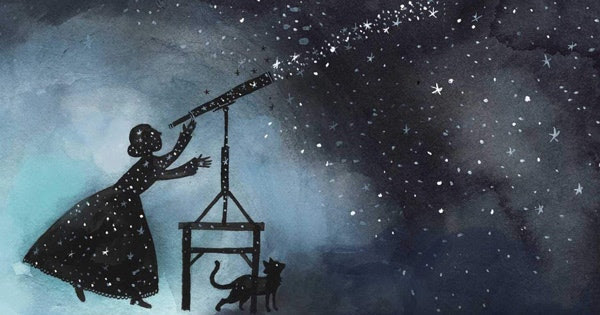with the SciSchmooze

Greetings Science Fans and Science Curious,
I spent 25 years working in “emergency services” on fire engines and ambulances. I’m sure you have seen a story about a tragic incident that was “avoidable” or maybe even seen it personally. Let’s just say that I have seen a lot of them. One of the things that always set me back was thinking about why it even happened. There are so many senseless and avoidable things that could easily be avoided if someone just paid a bit more attention and considered what they were doing. Mind you I’m not talking about calculated risk taking like skydiving, mountain climbing, or even the most dangerous activity (actually that is a prime example!-) we do. Look, we all take risks, we have to, just to get through the day. But I contend that by having a reasonable awareness and knowledge of science we can all enjoy life more with our families and friends. Like everything science does have limits and there is a lot of stuff that is touted as science that really doesn’t rise to that level of scientific knowledge and understanding. (Note: That may be one of the most important videos I have ever shared with the SciSchmooze!) Shop for ideas carefully… listen now to Paul Staley: The Marketplace of Ideas I’m also reposting this one!! The Case for Living Scientifically | Nautilus Behind the Scenes
So how do we learn or teach people how to recognize risk and maybe the consequences of too much risk? For me I look back to my high school physics teacher, Mr. Gielow. A week doesn’t go by that I don’t use something Mr. Gielow taught me to figure out a solution to something I’m making or fixing. Why am I going on like this? Because I have been helping install The Art of Tinkering at the explOratorium. It’s the closest thing to how Mr. Gielow taught physics. You push on something, stack something, blow or pull on something and you realize that you can learn something simple and apply it to something else and it will all make more sense and lead to a deeper appreciation of what we take for granted. This is a great time to go to the explO. You don’t even have to go in to play at Middle Ground. It’s free and right on the Embarcadero.
I have said before that science is a great way to help us understand just about anything the universe has to offer. It does get tough when you add human emotion and perception though. That’s where art really comes in to its’ own for me. Check out Poetry of the Cosmic Perspective (chapter 3 of The Animated Universe in Verse (the video is at the end of the intro for these))
As always there are some fun and interesting new things to catch this week. Here are a few that look particularly cool…
Animal Queendom Tue @ 6:00 (see the Wonderfest option at the website)
Bair Island Interpretive Walk Fri @ 10:00
Investigating Space: The Peregrine Has Landed Sat @ 1:00
The Leviathan of Parsontown – Livestream Sat @ 7:00
In the upcoming week we will get some more treats from the sky… 6.21.22 @ 03:12 is the start of summer, but the festivities continue!
Dr. Alex Filippenko sent along this info for Fri 6.24… Five naked-eye planets arc across the sky from east to west in the correct order of increasing distance from the Sun: Mercury (low above the eastern horizon), then very bright Venus, followed by Mars (looks reddish orange), Jupiter (bright), and Saturn. Such a “planetary parade” with all 5 planets visible *simultaneously* last occurred 18 years ago, and I think it won’t happen again until around 2100 (I might be wrong about this, but the configuration is quite rare in any case). To top it off, on the early morning of June 24, the waning crescent Moon will appear between Venus and Mars — representing Earth (since the Moon orbits us) at its proper place in the celestial lineup. If you want to include Mercury, the best time to view this spectacle will be about 45 minutes before local sunrise: late enough in the night that Mercury will have had a chance to rise higher above the horizon, but not so late that the sky will be too bright because of the approaching sunrise. Binoculars could help you spot Mercury (or, use an App such as Sky Tonight, Star Walk 2, or SkyView). To see Mercury, you’ll need a very low, clear eastern horizon (i.e., no buildings, trees, hills, etc. in the way), but the other planets will be much easier to see in the southeast sky (and south, for Saturn). Of course, although these planets *appear* close together in the sky, they are actually separated by up to hundreds of millions of kilometers; Jupiter and Saturn are 5 and 10 times farther from the Sun than Earth is, for example.
If astronomy is your thing, check out Exploring the Universe with Andrew Fraknoi (go ahead, subscribe, you know you want to!)
Whales always intrigue most of us! Here are a couple of whale tales. Whale bubble-net feeding and polar bear whale feeding! It would seem that the race for the deep is on. The Race to Explore the Ocean’s Twilight Zone
If you haven’t registered for SkeptiCal 2022 I suggest that you do! It is less than a month away!
I hope that you have a great week and start of summer while learning something new or continuing to enjoy something you already like about science.
herb masters
Reality must take precedence over public relations, for nature cannot be fooled.
Richard P. Feynman
Upcoming Events:
Click to see the next two weeks of events in your browser.
